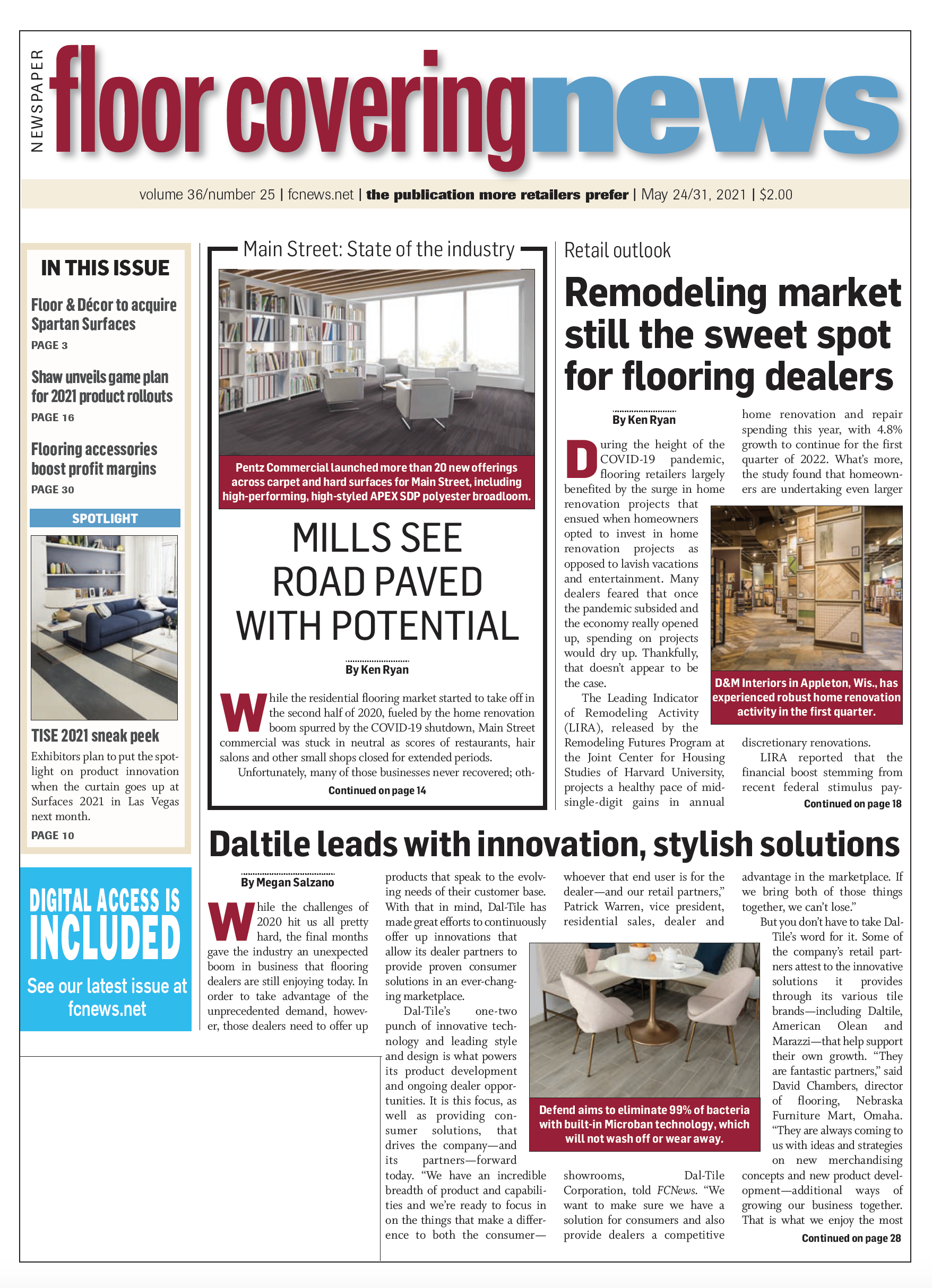 By Steven Feldman How’s everyone doing out there? Five months into 2021, the proverbial “What a difference a year makes” couldn’t ring more true. Last spring, we were worried about getting customers in the door; this spring, we are worried about getting enough product to service all those customers walking through the door.
By Steven Feldman How’s everyone doing out there? Five months into 2021, the proverbial “What a difference a year makes” couldn’t ring more true. Last spring, we were worried about getting customers in the door; this spring, we are worried about getting enough product to service all those customers walking through the door.
Last year, every conversation centered around COVID-19. This year, every conversation is all about which vaccine one received. And, of course, the shortage of containers, getting containers (if you indeed got them) on ships, getting containers offloaded (if you were lucky enough to get them on the boat in the first place) and getting product from the ports to warehouses. And, of course, costs. The numbers I’ve heard are obscene. People are paying anywhere from two to five times more than they did as recently as six months ago. That’s why you’re seeing price increases seemingly every month. There’s a limit to what the supplier can absorb.
It has truly been the perfect storm. Last year, while everyone was stuck at home, money was burning a hole in their pockets. People bought furniture, they bought appliances, they bought flooring. The home centers were open, and people apparently were not afraid of catching COVID-19 at Home Depot or Lowe’s. So now, people are still in buying mode while at the same time the big boxes and everyone else are looking to replenish inventory. There are not enough boats, there are not enough con- tainers and there are not enough LTLs to get product from there to here once it has landed on these shores.
Then you have the labor issue. We’ve always talked about a shortage of installers. We’ve recently been talking about a dearth of qualified salespeople. Now you have a shortage of workers—period. I’m talking about people in your warehouse and people at the ports. It’s the relatively low-paying jobs that are not being filled. The reason: extended unemployment benefits until September. That extra $300 a week, coupled with state benefits, disincentivizes people in many cases to return to work, some experts say.
Here’s the good news: As of May 25, at least 23 states have announced plans to cancel the enhanced pandemic-related unemployment benefits. Citing labor shortages, state governors claim this unemployment coverage discourages workers from taking jobs. I’m sure this will become a political issue (all 23 states are governed by Republicans) as some economists and analysts disagree, noting that several factors are preventing people from finding suitable work, including lack of child care and fear of contracting COVID-19. As for the latter, I call BS. Get yourself vaccinated like half the adults in the U.S. already have and move on. But that’s just me.
One manufacturer executive recently told me he feels he is competing with the Federal government for employees. He told me warehouse workers who have not returned to work are making almost the same money by staying home. No brainer. But last week Labor Department officials declared that the Federal government cannot intervene to provide jobless benefits once states cancel participation. And the White House is unable to force state governors to pay out the extra federal benefits.
The most popular flooring category today, rigid core, is almost entirely imported from China, accentuating our current reliance on Asia. Hence the rea- son why roughly 10 domestic SPC plants are currently being constructed. We’ve also seen an increase in laminate consumption—not the cheap stuff but 10mm and up. Many companies, namely Mohawk, Mannington, Swiss Krono and more, make their products stateside. In some cases, according to some retailers I’ve spoken with, SPC sales are being converted into laminate sales simply because of availability—not to mention how the visuals are continually being taken to the next level.
In any case, it’s probably better to have a shortage of supply than a shortage of demand, right?

